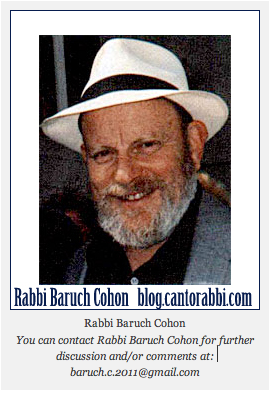
CREED OR DEED – Yisro – Ex. 18-20 – by Rabbi Baruch Cohon
As we read the one-and-only story of an entire nation getting certified by G-d Almighty, with Moses ascending Mount Sinai amid thunder, lightning and smoke, we might expect this week’s reading to be named for Moses. It is not. Instead, it bears the name of Moses’ father-in-law, Jethro, a heathen priest of Midian. When he heard about the miraculous events of the Exodus, he determined to cast his lot with his son-in-law and the people of Israel. At the beginning of this week’s reading, we find him giving Moses practical advice: Don’t wear yourself out judging all these people’s petty grievances – appoint some able G-d-fearing truthful men, men who hate unjust gain, and make them rulers of thousands, hundreds, fifties and tens. Let them bring you the hardest cases, and let them judge the rest. Moses gratefully takes the advice, and Jethro goes home. His vision, his wise counsel, qualifies him to give his name to this climactic Torah portion.
Now Israel arrives at Sinai. All through the centuries, thinkers wondered why this rather minor mountain became the place where mankind would meet G-d. Located in desert country, it is usually identified with Jebel Musa, where a wide plain spreads below it, offering enough space for the Israelite camp. Remember Moses led 600,000 men of military age, plus the women, children and old people – plus the eyrev rav, the hangers-on who left Egypt with them. Estimates of the total population number 2 to 2.5 million. And they had animals too, so they needed plenty of camping space. But more than that, they needed purpose.
Against all probabilities, they got out of Egypt safely. That purpose was physical freedom, and they accomplished it. What now?
Moses climbs the mountain and hears the Divine call: “Speak to beys Yaakov, the House of Jacob, and tell b’ney Yisroel, the sons of Israel..” Who were these two entities? Our commentators tell us that the House of Jacob refers to the women, and the Sons of Israel to the men. Indeed, today we frequently find schools for Jewish girls called Beys Yaakov. The message went to the women first, as they would teach it to their children and extend it into future generations.
What is the message Moses is charged with? “If you will listen, and keep My covenant, you will be My treasure among all nations, for all the earth is Mine.” And the people agree! For once, the answer is unanimous.
Now they are given time to prepare for the covenant that will make Israel a singular nation. “Sanctify yourselves today and tomorrow. Wash your clothes… Be ready for the third day. Don’t go near a woman.”
How’s that again? Is this an ancient “war on women?” Exactly the opposite, as Rashi explains quite graphically. Abstaining from sexual contact for those 3 days would ensure that the women would be ritually clean to receive the Torah.
While tradition holds that all 613 Mitzvos were received on that third day, all the text gives us here are the “big 10.” Significantly, they are not called Commandments in Hebrew. They are called aseres hadibros, literally “ten statements.” These are principles of right and wrong, Divinely authorized in #1 and #2, and detailed in the other 8. Honoring your parents is right. So is resting one day a week. But murder is wrong – and the text definitely reads “thou shalt not murder,” not “thou shalt not kill.” Warfare and legal execution involve killing, but they are not the violent sin of murder. Also wrong are adultery, theft, false witnessing, and that puzzling word “covet,” the urge that comes from jealousy, the desire to have what someone else has, the obsession that leads to crime. These are not ritual observances. These are basic standards of human conduct.
How can we justify removing Ten Commandments monuments from our courthouses today? There is no church-state violation of the U.S. Constitution here. Even those first two statements cite no specific religion – not “I am thy Jewish G-d, or thy Christian or Hindu or Muslim G-d” – just the One divine source of life and instructor of right and wrong. These Ten belong on our houses of justice.
In the next reading Moses will receive the practical do’s and don’ts, and their corresponding rewards and penalties, and we will read of some disturbing results among the people at the foot of the mountain. But for now, hearing the Big Ten in shul, let’s stand and receive these eternal principles once more, with respect and gratitude for our distant ancestors, just 3 months out of slavery, who could accept the role of teaching truth to the world.
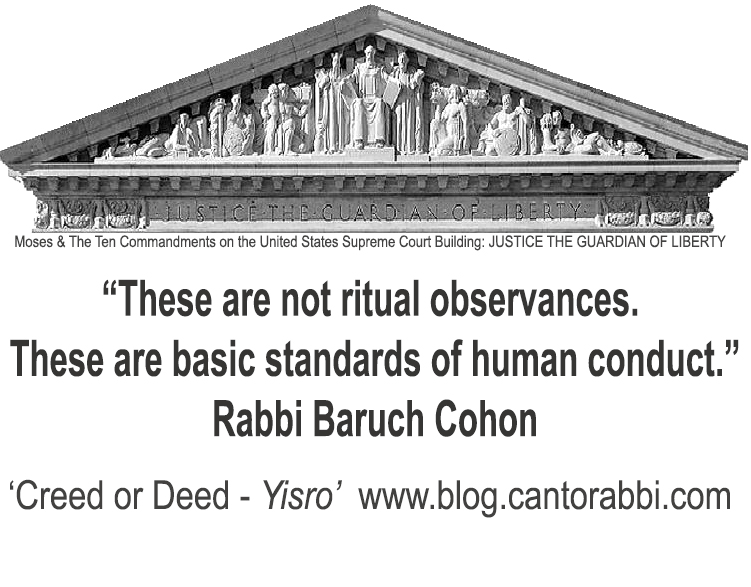
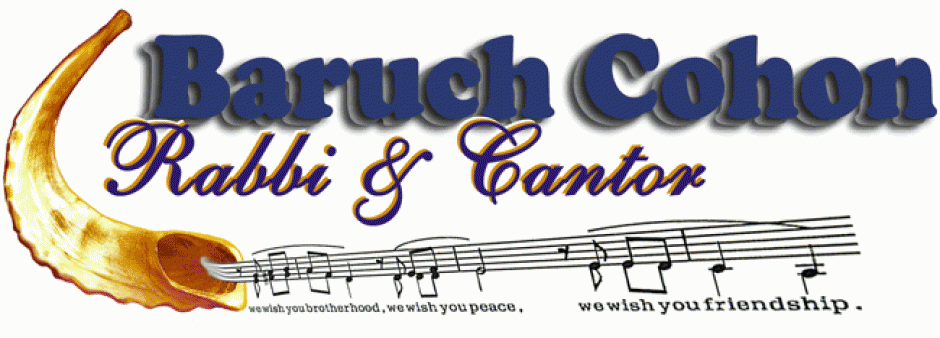
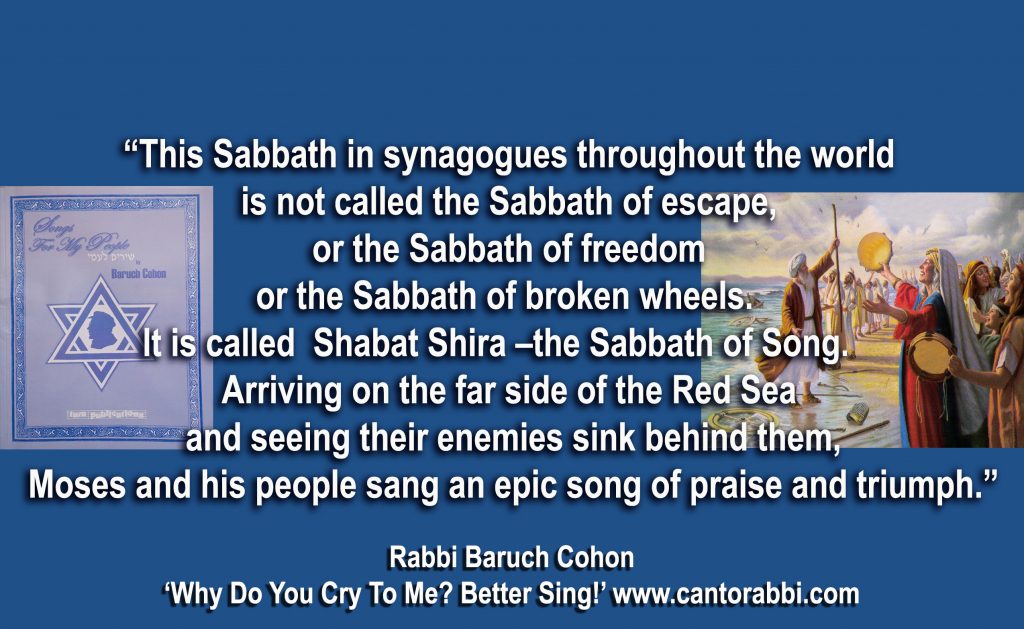
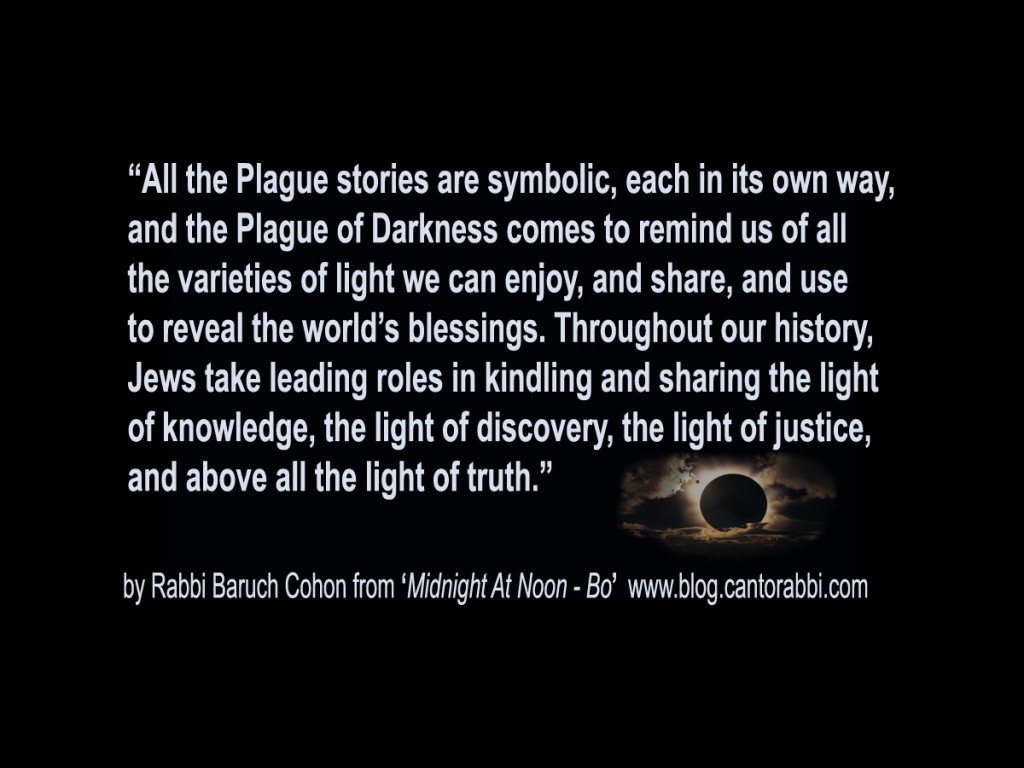
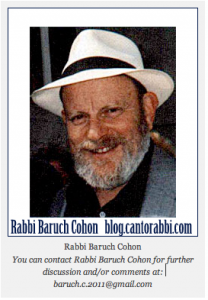
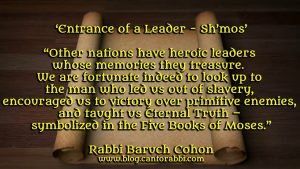

ARE THEY LISTENING? – Va-eyra – Ex. 6 – 9, by Rabbi Baruch Cohon
ARE THEY LISTENING? – Va-eyra – Ex. 6 – 9, by Rabbi Baruch Cohon
This week we will follow Moses on his challenging mission, and witness seven of the ten Plagues of Egypt. He does not seek this role, any more than he was seeking leadership in last week’s reading when he stood transfixed at the Burning Bush, heard the voice of G-d, and yet tried to decline the job, saying “Send any one You want to send.” Obviously Not Me. He even went so far as to question the Divine: “Lamah harey-ota —Why did You wrong this people?”
Now he is still protesting. Two sentences highlight the decision that Moses finds thrust on him. First, he brings the message to the Israelite slaves, repeating G-d’s promise to make them His people, taking them out of slavery and bringing them to the Land of their fathers, our Patriarchs, Abraham, Isaac and Jacob. But the people aren’t listening. “Lo shom’u el Moshe – They did not listen to Moses.” Why? The Torah gives two very good reasons: “Because of kotzer ruakh –literally, shortness of breath; and avodah kashah – hard labor.” Shortness of breath can be taken as a synonym for impatience. They couldn’t accept such a dream. It can also signify that they were so tired they were physically unable to speak, therefore they could not answer Moses. And the hard labor they were subjected to is the cause of both these reactions.
Sentence #2 comes just three lines later. When commanded to go to Pharaoh and tell him to send the Israelites out, Moses replies: “Here the people of Israel did not listen to me. How will Pharaoh hear me?” He even brings up his speech impediment to emphasize his point: “I have uncircumcised lips!” We know Moses stuttered, and this is a picturesque description.
Our commentators had a great deal to say about these two p’sukim. Rashi cites a Midrash that states that all this dialogue is in fact punishing Moses for his complaint against G-d (Why did You wrong this people?). And then Rashi rejects the Midrash analysis and writes that it should be considered alongside the literal text, rather than explaining it. Taking both opinions together, we read that the Patriarchs never objected to Divine action. Only Moses did. And here Rashi cites a Midrashic quotation from Jeremiah where G-d says “Is not My word like fire, and like a hammer that breaks a rock? It spreads many sparks.” Each spark contains light, and spreads that light in many directions. So both interpretations are appropriate. He also quotes a teaching of a certain Rabbi Baruch son of Eliezer, citing this passage as evidence of G-d’s power, and mourning the passing of the Patriarchs, who never asked for the Divine Name. Moses did.
The Klee Yokor commentary, by Rav Shlomo Ephraim of Lunchitz, treats Moses’ objection as one of the few Biblical instances of a technique called kal va-khomer, literally “light and heavy,” reasoning from the particular to the general, or from the simple to the powerful. If the weak and downtrodden Israelites don’t listen, how can Moses expect an absolute monarch like Pharaoh to listen?
The Lubavitcher Rebbe writes that the Patriarchs served G-d through emotion, while Moses served through intellect. Therefore, this whole exchange is a Divine call for Moses to add some emotion to his service.
And former Chief Rabbi of England Hertz zeroes in on the phrase “uncircumcised lips.” He points out that the same figure of speech is applied elsewhere to the ear and to the heart, and states that Moses had just one doubt, namely that he failed to convince his people because of his stuttering.
Let’s face facts. We all feel that way sometimes, don’t we? If my own family doesn’t listen to me, can I convince my boss?
Using both intellect and emotion, Moses expressed a universal frustration. Yet he succeeded in his mission. Even if our stuttering is mental rather than physical, we can do our best to follow his example. Accept the challenge!